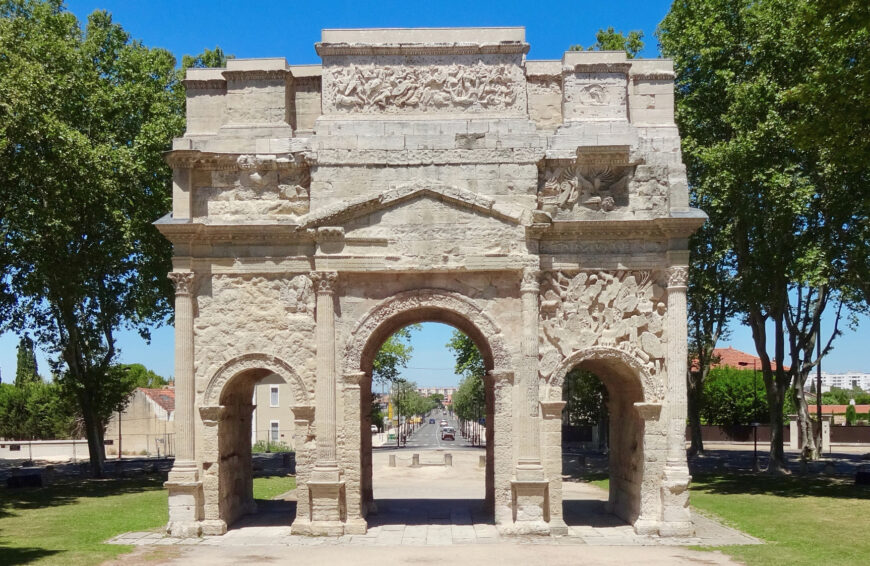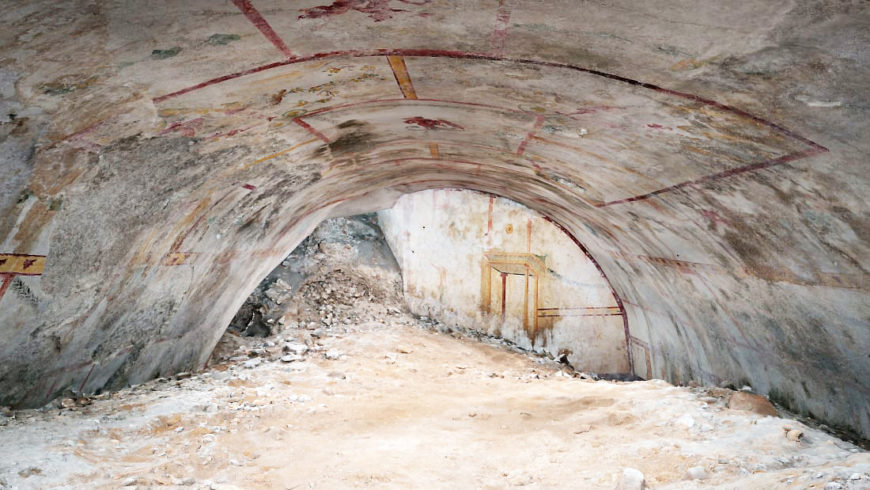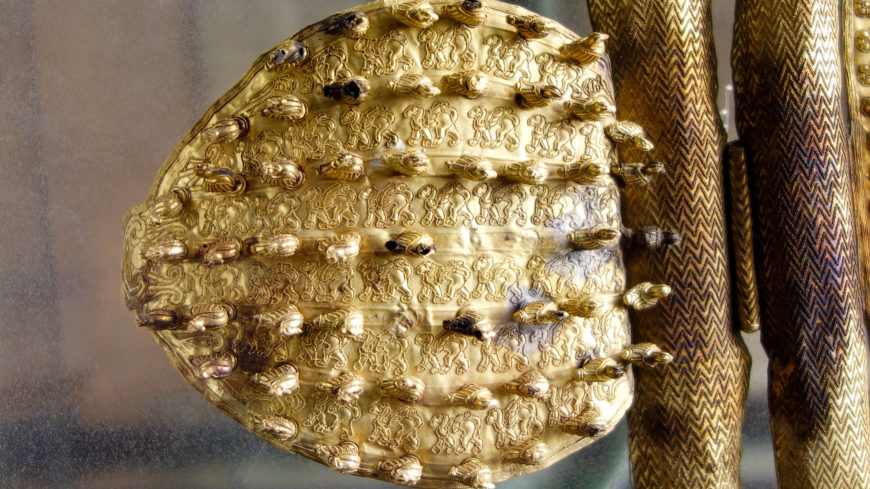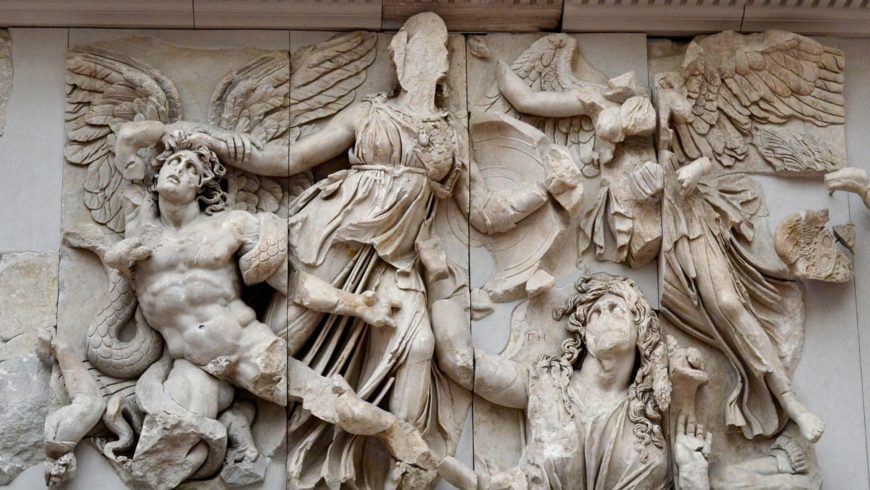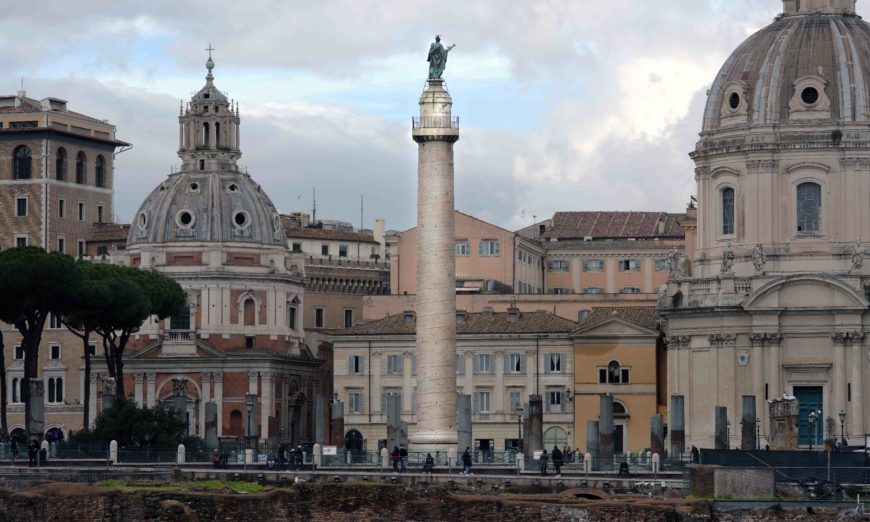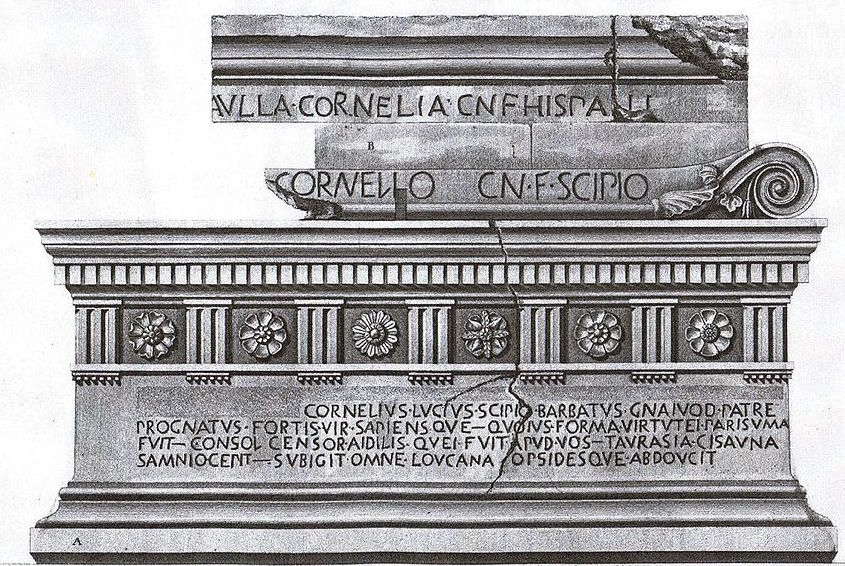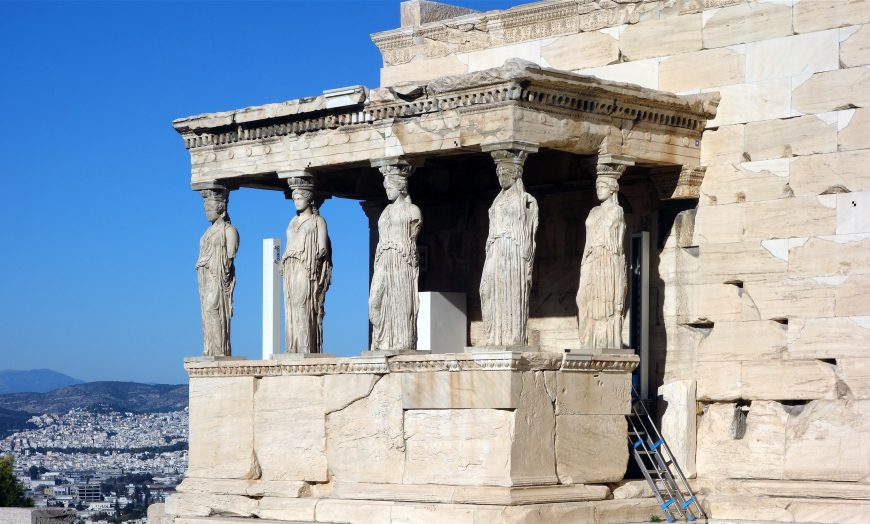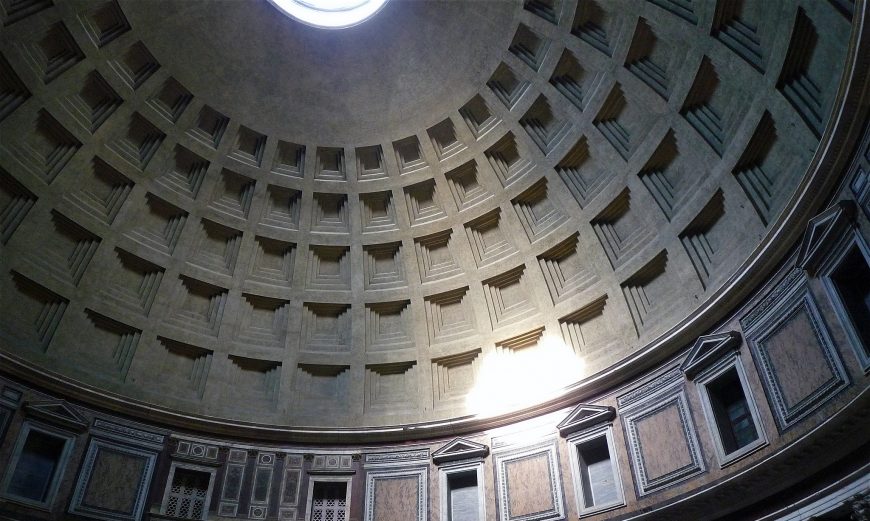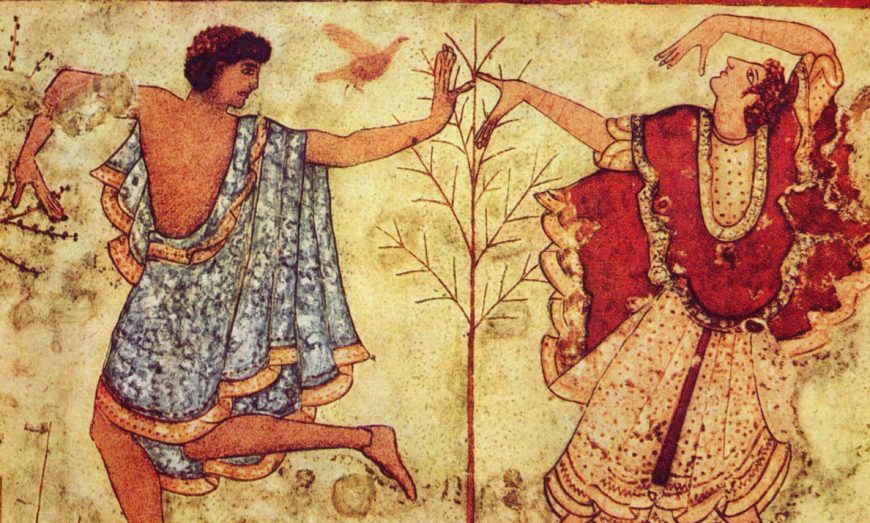The god Apollo spoke through his priestess at Delphi, and Greek cities competed for his favor with offerings.
Sanctuary of Apollo at Delphi, Greece
[0:00] [music]
Dr. Beth Harris: [0:01] Sitting here overlooking the sanctuary of Apollo at Delphi makes it really clear to me why the Greeks believed that the gods dwelt on a mountain.
Dr. Steven Zucker: [0:16] We have this glorious view.
Dr. Harris: [0:17] I feel on top of the world; it makes sense. The Greeks practiced their religion in places called sanctuaries that became complexes of many buildings.
Dr. Zucker: [0:28] This is one of the most important pan-Hellenic sanctuaries. What that means is that it was not controlled by one city-state but it was a place that Greeks came from numerous city-states from all over Greece.
Dr. Harris: [0:40] Therefore, “pan-Hellenic” = “across Greece.” The sanctuary at Olympia is another example of a pan-Hellenic sanctuary.
Dr. Zucker: [0:47] Now of course, in that case, Greeks from all over came to compete in athletic games. Olympia also had an oracle, that is, a priestess who had a connection to the gods. Here at Delphi, this was perhaps the single most important sanctuary, because here, although there were games, there were musical competitions, and there were sporting competitions, this was the place with the single most important oracle. That is, with a priestess who could help decide major political and even private issues.
Dr. Harris: [1:19] The priestess here at Delphi, the oracle, was called the Pythia. She made her pronouncements, she answered questions, from the temple that we’re looking at now.
Dr. Zucker: [1:29] When she did this, she was seated behind a curtain, we believe. She was seated on a tripod and over a chasm that went into the earth. According to traditions that go back at least to the 9th century, this was a way that she connected directly to the god Apollo.
Dr. Harris: [1:47] Right, a way that Apollo could speak through her, and so we’re in a space that is entirely sacred to the god Apollo.
Dr. Zucker: [1:55] According to the ancient reports we have, the way this would work is somebody of high stature, with significant wealth or political power, would come with a very specific question, often a yes or no question.
[2:07] They would give it to one of the priestess’ assistants and that would then be read to the priestess, who was behind a curtain. She would make a pronouncement, which would then be interpreted, so that it could be understandable, by the assistant priests.
Dr. Harris: [2:21] As a pan-Hellenic sanctuary, as a sanctuary for all Greeks, this was a place where one could show off the wealth and the power of your city-state. The primary way that city-states could do that was by building treasuries. Now, treasuries were often small buildings. They weren’t peripteral, that is, we normally think about a Greek temple as having columns all around it.
[2:43] Instead, they had columns in the front and they were mostly storehouses for objects that were being offered, dedicated to the god. It’s important to remember that Greek religion was transactional. That people gave gifts to the gods, and in turn, the gods favored them.
Dr. Zucker: [3:01] This might be booty that was taken in war, it might be the result of some other kind of good fortune, but there’s no question that that transactional aspect was important. You wanted to give as much as you could to the sanctuary of Apollo in order to stay in Apollo’s good graces.
Dr. Harris: [3:18] When visitors came to the sanctuary, they walked up what was called the Sacred Way, and they passed by numerous treasury buildings built by numerous Greek city-states, or what the Greeks called the “polis.”
Dr. Zucker: [3:31] Now you can imagine how competitive this was, because each city-state was showing off against the other.
Dr. Harris: [3:37] Right, and we can look down at the reconstructed treasury built by the city-state of Athens.
Dr. Zucker: [3:43] That’s a great example. Just beside it, we believe that there had once been a huge pile of booty that they had taken from the Persians at the Battle of Marathon.
Dr. Harris: [3:52] Right, which they won against great odds, and so you really could understand why they would thank the gods for that victory.
Dr. Zucker: [4:00] It’s one of the larger treasuries and it’s in a very prominent place. Just below the Athenian treasury is a smaller treasury, which was, according to reports, the most lavishly decorated of all the treasuries here. This belonged to the small island of Siphnos in the south of the Aegean Sea.
Dr. Harris: [4:16] The Siphnians were especially wealthy because they had gold and silver mines, so they could afford to build a lavish treasury.
Dr. Zucker: [4:23] The treasuries are stacked up over each other, it’s such a steep space.
Dr. Harris: [4:28] You wound your way back and forth to go up to the very top of the sanctuary, where we see the theater.
Dr. Zucker: [4:34] Well, most sanctuaries had a theater, the most famous probably the theater at Epidaurus, which was an important sanctuary for healing.
Dr. Harris: [4:40] This is a good reminder that theater was connected to religious practice, and it’s interesting to note too the form of the theater. We have the actors on the bottom and the seats rising up above, built into the hillside. Imagine sitting in that theater, looking down past the actors to this amazing view of the temple and the valley beyond.
[5:02] [music]


